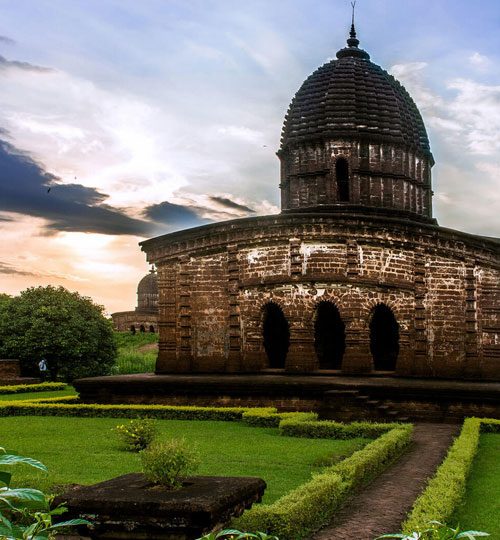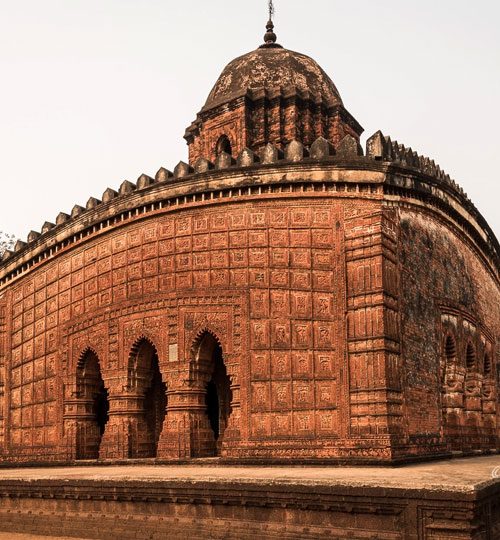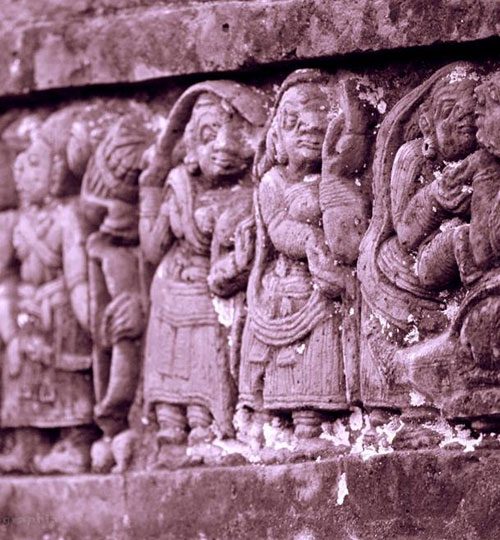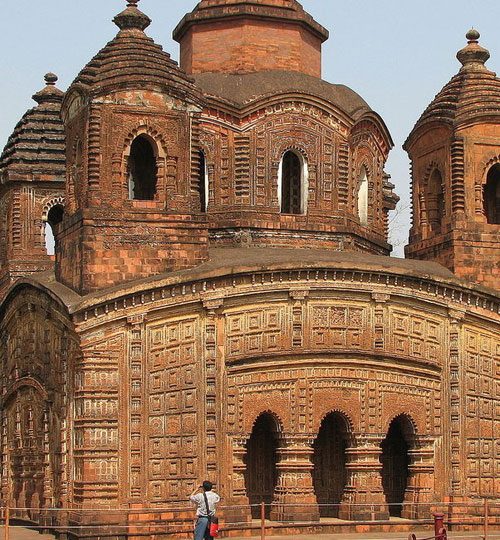Bishnupur
Bishnupur comes under the Bankura district in the state of West Bengal. It is a small town and famous for the rich heritage of its terracotta temples which mark the significance of the glorious past of this town. This temple town is also the birthplace of a famous branch of Indian classical music, namely ‘Bishnupur Gharana’.
Forest Tours
History of the malla king
It is said that during the end of the 7th century, a Kshatriya King from North India was scheduled to do a pilgrimage in the southern part of the country. His pregnant wife decided to accompany him. It is said that during the journey when they were crossing the Bishnupur region, the queen was taken to a Brahmin's house where she delivered a male baby and passed away. The king now had to choose between the child and the pilgrimage that he so devotedly planned for. He left the child to the Brahmin's house and requested the Brahmin to take care of the newborn. The baby later founded the Malla Kingdom and was considered Adi Malla or the first Malla King. The word Malla in Sanskrit means wrestling as it is a popular sport in the region. Historians also said that the word is linked with the local mal tribes of the area. During the time of King Jagat Malla who is known to be the 10th ruler of the Malla dynasty, the kingdom was shifted to the present Bishnupur. The ancestors of Adi Malla were Vaishnavite. The name Bishnupur meant the abode of Vishnu.




The Terracotta Temples and Baluchari Sari of Bishnupur
The 49th Malla King Bir Hambir converted to Gaudiya Vaishnavism and started building Vaishnav temples in the region. This gradually turned Bishnupur into a temple town. Under the rule of King Raghunath Singha Dev, the art and culture of Bishnupur reached their pinnacle. As this part of Bengal does not have an abundance of stone, Clay is the most easily available and thus came the idea of using burnt clay bricks as the main materials for building the temples.
Bishnupur is also famous for its Baluchari saree. There are many shops which demonstrate the high-quality terracotta showpieces of the region. A nearby Panchmura village (23 km from Bishnupur) is often visited by tourists where one can witness live demonstrations of terracotta artefacts.
Places to Visit
Raas Mancha – It is not a temple in the true sense of the term. But the uniqueness of this structure makes it an example of architectural brilliance. The Raas Mancha was built by the Malla King Veer Hambir in the year 1600. The entire structure stands on a high platform built by laterite blocks. The pyramidal roof and the ached verandas gave it a shape which is not found anywhere in Bengal. At the time of the Raas Festival, all the deities of Bishnupur temples are brought together here. Raas Mancha remains one of the finest attractions of Bishnupur.
Shyamrai Temple – It was built by Malla King Raghunath Singha in the year 1643. It is a double-storied temple and a classic example of the finest terracotta works of Bengal. The temple has some exquisite features. The temple also depicts high-quality terracotta work illustrating the divine Raas Leela of Lord Krishna with Sri Radha.
Jor- Bangla or the Kestorai temple – Built by Raghunath Singh in 1655, the temple looks like two thatched huts joined together by a single tower that also looks like a square hut. One gets to see the finest terracotta plaques displaying different kinds of scenes from the two epics Ramayana and Mahabharata.
Madanmohan Temple is probably the most famous temple in Bishnupur. It was built by King Durjana Singh in 1694. Deities of Lord Krishna who is called Madan Mohan and Radha are worshipped here. The terracotta panels of this temple are considered one of the best in the region. It is an active temple and represents the single pinnacle temple structure. The beautiful terracotta sculptures found on the wall and pillars of the temple depict stories of Hindu epics.
Radhe Shyam Temple – Built by Malla King Chaitanya Singha in the year 1758, It is a single pinnacle temple with a Tulsi mandap in the complex.
Mrinmayee Temple – One of the oldest temples in Bishnupur, built by Jagat Malla in 997 AD. The firing of cannons from this temple marks the initiation of Durga Puja in other temples of the town.
Dol Madol Cannon – Constructed in 1742 by Raja Gopal Singh to defend Bishnupur against Maratha invaders (locally known as Bargi).
Chinnamasta Temple – One of the holy temples dedicated to Devi Chinnamasta and located close to the Dol Madol Cannon.
Other popular temples include the Radha Govinda Temple, Nandalal Temple, Radha Madhab Tempel, Radha Vinod Temple, Kalachand Temple, Radha Laljiu Temple and others.
Getting There
Bishnupur is well connected with Kolkata by road and train. It is about 140 km away from Kolkata and about a 4.5-hour drive. There are several trains connecting Kolkata with Bishnupur, the average travel time by trains varies between 3 and 4 hours.
